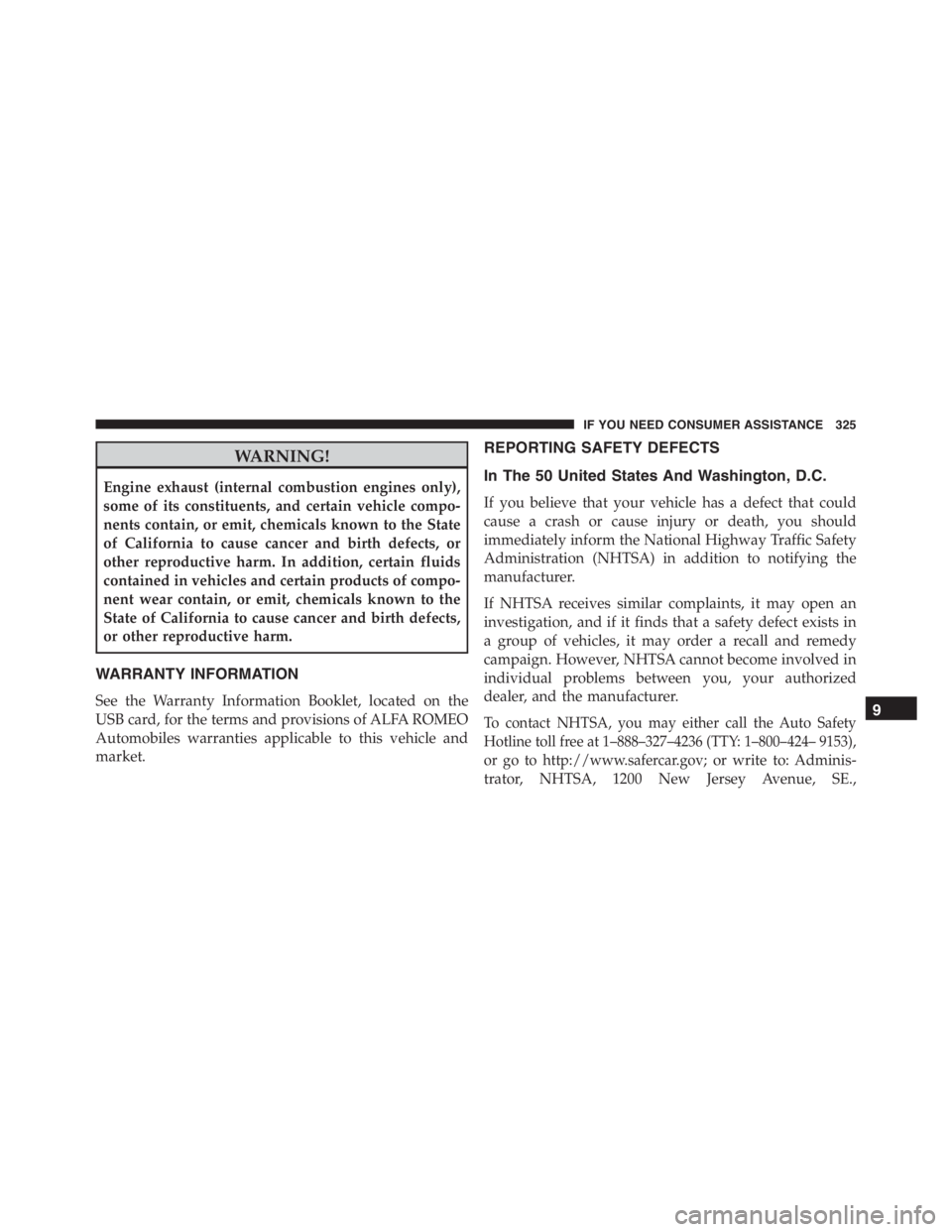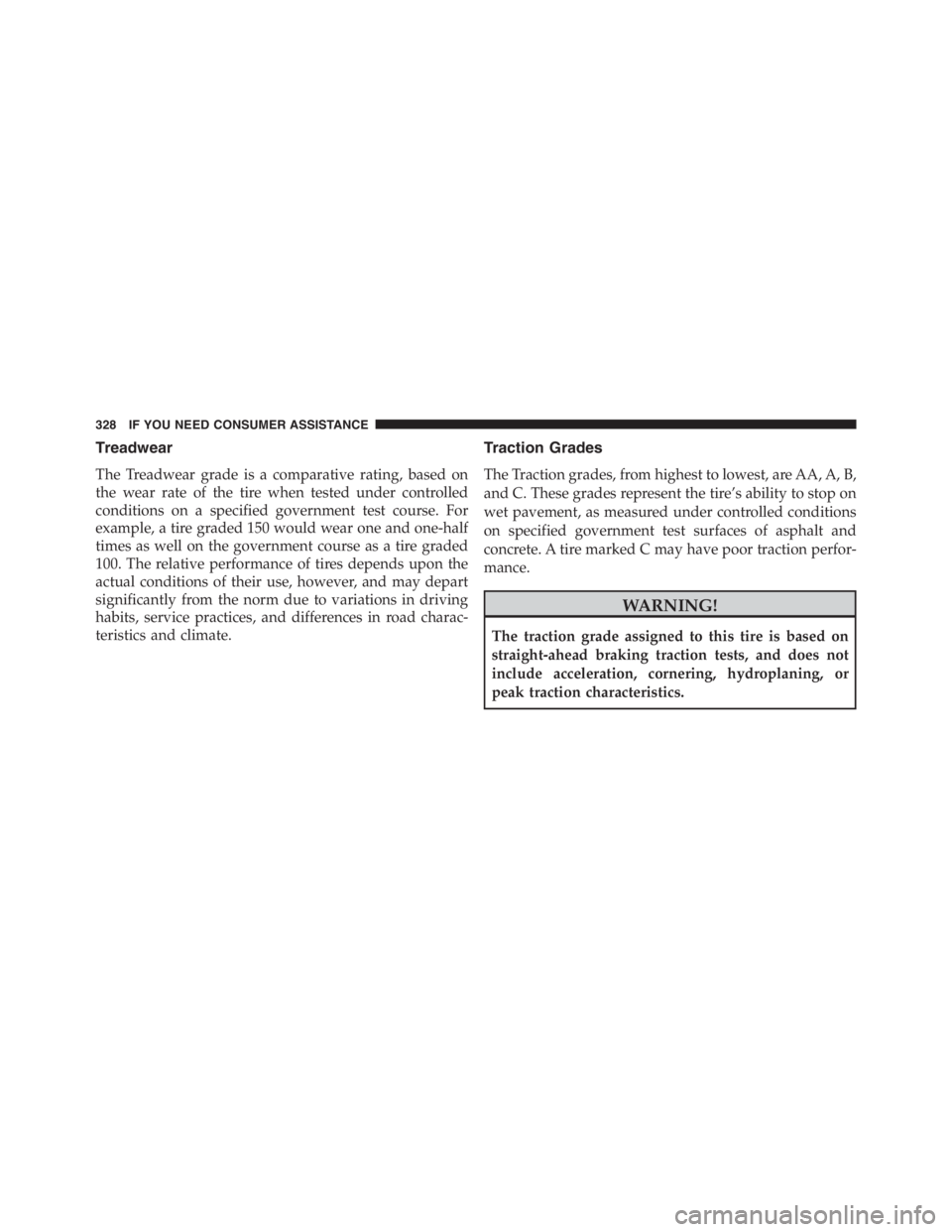Page 303 of 348
2. Remove the second protective cap inserting a hand
inside the opening.
3. Rotate clockwise to remove the bulb holder remove
the bulb from the bulb holder.4. Install the bulb by pressing it into bulb holder then
turn install the bulb holder and turn it counterclock-
wise.
5. Install the previously removed protective caps.
Tail Lights/Brake Lights
These are LEDs. For the replacement, contact the your
local dealer.
Reversing Light
WARNING!
The reversing light are located close to the exhaust
pipes; take the utmost care not to get burnt during
the bulb replacement.
Second Protective Cap
7
MAINTAINING YOUR VEHICLE 301
Page 314 of 348

MAINTENANCE SCHEDULE
Your vehicle is equipped with an automatic oil change
indicator system. The oil change indicator system will
remind you that it is time to take your vehicle in for
scheduled maintenance.
Based on engine operation conditions, the oil change
indicator message will illuminate in the instrument clus-
ter. This means that an engine oil and engine oil filter
change is required for your vehicle. Operating conditions
such as frequent short-trips, trailer tow, extremely hot or
cold ambient temperatures, and E85 fuel usage will
influence when the “Change Oil” or “Oil Change Re-
quired” message is displayed. Severe Operating Condi-
tions can cause the change oil message to illuminate as
early as 3,500 miles (5,600 km) since last reset. Have your
vehicle serviced as soon as possible, within the next 500
miles (805 km).The Wrench Warning Light may appear in the cluster as
a service reminder when vehicle maintenance is required,
according to the scheduled maintenance mileage. The
maintenance schedule intervals are set by the manufac-
turer. Failure to have them carried out may void your
New Vehicle Warranty.
NOTE:The actual interval for changing the oil and
replacing the engine oil filter depends on the vehicle
usage conditions and is signalled by the warning light or
message (if present) on the instrument panel or every 12
months.
Severe Duty All Models
In addition, if your vehicle is used under demanding
conditions, including:
•On the track
•On dusty roads
312 MAINTENANCE SCHEDULES
Page 318 of 348
Maintenance Chart
Mileage or time passed (whichever comes first)
12,000
24,000
36,000
48,000
60,000
72,000
Or Months: 12 24 36 48 60 72
Or Kilometers:
20,000
40,000
60,000
80,000
100,000
120,000
Check battery charge status and possibly recharge⌂XX X X X X
Check tire condition/wear and adjust pressure if required X X X X X X
Check lighting system operation (headlights, direction indicators,
hazard lights, passenger compartment lights, boot lights, instrument
panel warning lights, etc.)XX X X X X
Check vehicle fasteners X X X
Check mechanical components fasteners X X X X X X
Check windscreen wiper/washer operation, adjust nozzles X X X X X X
Check position/wear of windscreen wiper blade X X X X X X
316 MAINTENANCE SCHEDULES
Page 322 of 348
(**) The actual interval for changing the oil and replacing
the engine oil filter depends on the vehicle usage condi-
tions and is signalled by the warning light or message (if
present) on the instrument panel or every 12 months.
(***) If the vehicle is operated in a dusty or dirty
environment the engine air filter has to be changed every
6,500 miles (10,000 km).WARNING!
•You can be badly injured working on or around a
motor vehicle. Do only service work for which you
have the knowledge and the right equipment. If
you have any doubt about your ability to perform a
service job, take your vehicle to a competent me-
chanic.
•Failure to properly inspect and maintain your ve-
hicle could result in a component malfunction and
effect vehicle handling and performance. This
could cause an accident.
320 MAINTENANCE SCHEDULES
Page 327 of 348

WARNING!
Engine exhaust (internal combustion engines only),
some of its constituents, and certain vehicle compo-
nents contain, or emit, chemicals known to the State
of California to cause cancer and birth defects, or
other reproductive harm. In addition, certain fluids
contained in vehicles and certain products of compo-
nent wear contain, or emit, chemicals known to the
State of California to cause cancer and birth defects,
or other reproductive harm.
WARRANTY INFORMATION
See the Warranty Information Booklet, located on the
USB card, for the terms and provisions of ALFA ROMEO
Automobiles warranties applicable to this vehicle and
market.
REPORTING SAFETY DEFECTS
In The 50 United States And Washington, D.C.
If you believe that your vehicle has a defect that could
cause a crash or cause injury or death, you should
immediately inform the National Highway Traffic Safety
Administration (NHTSA) in addition to notifying the
manufacturer.
If NHTSA receives similar complaints, it may open an
investigation, and if it finds that a safety defect exists in
a group of vehicles, it may order a recall and remedy
campaign. However, NHTSA cannot become involved in
individual problems between you, your authorized
dealer, and the manufacturer.
To contact NHTSA, you may either call the Auto Safety
Hotline toll free at 1–888–327–4236 (TTY: 1–800–424– 9153),
or go to http://www.safercar.gov
; or write to: Adminis-
trator, NHTSA, 1200 New Jersey Avenue, SE.,
9
IF YOU NEED CONSUMER ASSISTANCE 325
Page 330 of 348

Treadwear
The Treadwear grade is a comparative rating, based on
the wear rate of the tire when tested under controlled
conditions on a specified government test course. For
example, a tire graded 150 would wear one and one-half
times as well on the government course as a tire graded
100. The relative performance of tires depends upon the
actual conditions of their use, however, and may depart
significantly from the norm due to variations in driving
habits, service practices, and differences in road charac-
teristics and climate.
Traction Grades
The Traction grades, from highest to lowest, are AA, A, B,
and C. These grades represent the tire’s ability to stop on
wet pavement, as measured under controlled conditions
on specified government test surfaces of asphalt and
concrete. A tire marked C may have poor traction perfor-
mance.
WARNING!
The traction grade assigned to this tire is based on
straight-ahead braking traction tests, and does not
include acceleration, cornering, hydroplaning, or
peak traction characteristics.
328 IF YOU NEED CONSUMER ASSISTANCE
Page 331 of 348
Temperature Grades
The temperature grades are A (the highest), B, and C,
representing the tire’s resistance to the generation of heat
and its ability to dissipate heat, when tested under
controlled conditions on a specified indoor laboratory
test wheel. Sustained high temperature can cause the
material of the tire to degenerate and reduce tire life, and
excessive temperature can lead to sudden tire failure. The
grade C corresponds to a level of performance, which all
passenger car tires must meet under the Federal Motor
Vehicle Safety Standard No. 109. Grades B and A repre-
sent higher levels of performance on the laboratory test
wheel, than the minimum required by law.WARNING!
The temperature grade for this tire is established for
a tire that is properly inflated and not overloaded.
Excessive speed, under-inflation, or excessive load-
ing, either separately or in combination, can cause
heat buildup and possible tire failure.
9
IF YOU NEED CONSUMER ASSISTANCE 329
Page 335 of 348

Brake, Parking...........................173
Brakes.................................274
Brake System............................175
Anti-Lock (ABS)........................178
Master Cylinder........................274
Parking..............................173
Break-In Recommendations, New Vehicle.........68
Bulb Replacement.........................292
Bulbs, Light..............................72
Capacities, Antifreeze (Engine Coolant)..........306
Capacities, Fluid..........................306
Caps, Filler
Oil (Engine)...........................253
Carbon Monoxide Warning...................70
Car Washes.............................281
Cellular Phone...........................142
Chains, Tire.............................208
Chart, Tire Sizing.........................186Checking Your Vehicle For Safety...............69
Checks, Safety............................69
Child Restraint............................57
Clean Air Gasoline........................216
Cleaning
Wheels...............................282
Windshield Wiper Blades..................259
Climate Control..........................143
Manual..............................143
Clutch.................................274
Clutch Fluid.............................274
Compact Spare Tire........................203
Contract, Service..........................324
Coolant (Antifreeze).......................306
Cooling System...........................268
Adding Coolant (Antifreeze)...............270
Coolant Level..........................268
Disposal of Used Coolant.................272
Drain, Flush, and Refill...................268
10
INDEX 333